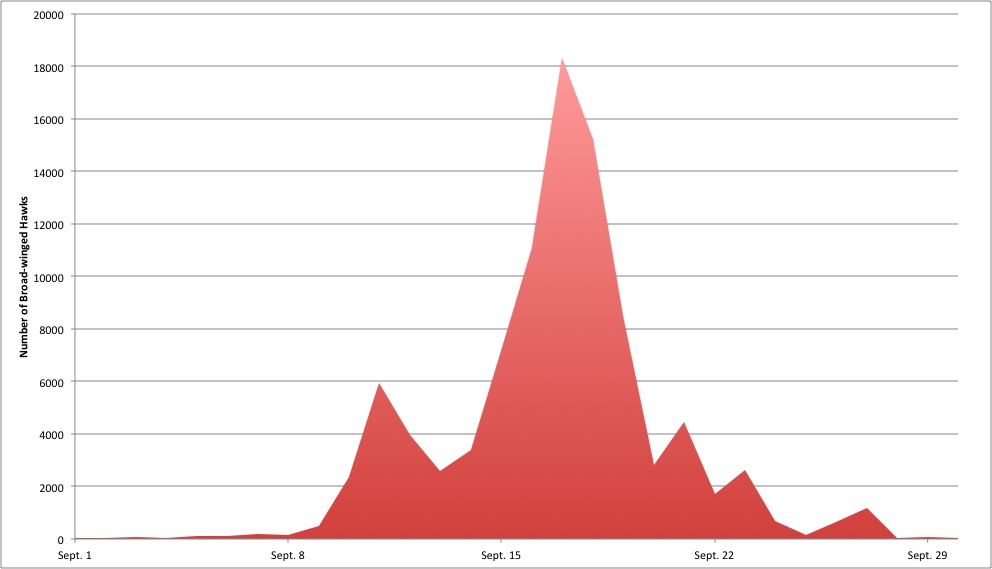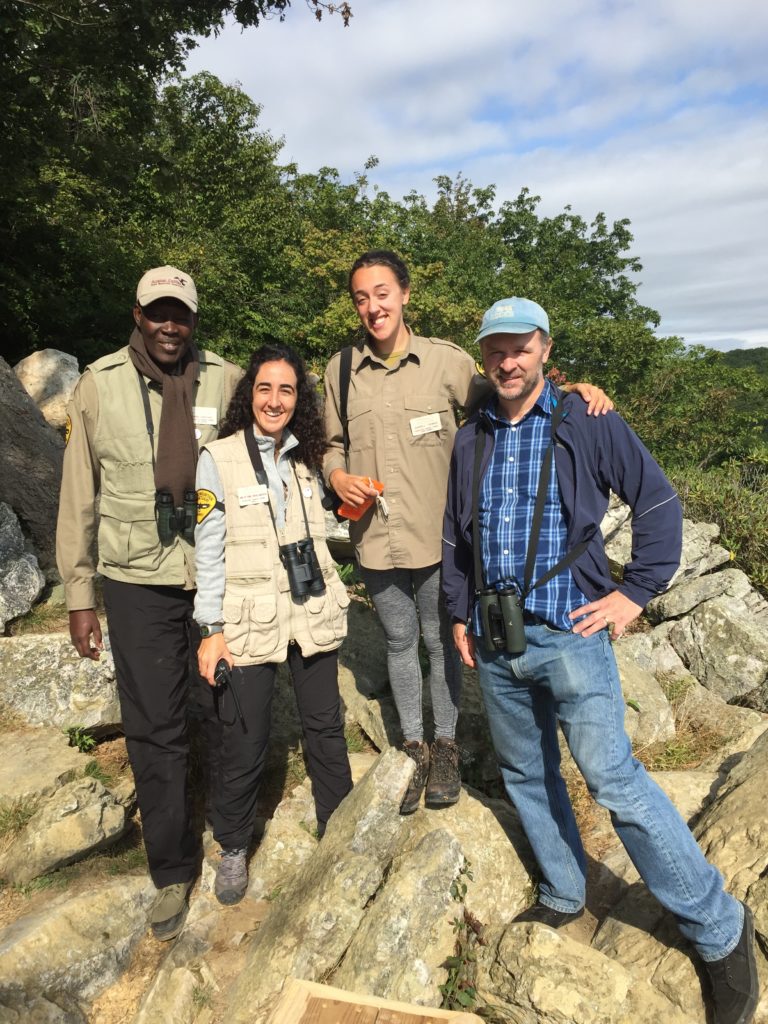Biking, logistics, and the simple business of living are getting in the way of writing, which is a primary goal of this trip. I have so much to share, so please bear with me while I catch up.
September 5th is in the rear view mirror fastened atop my helmet. In three weeks I have covered only 550 miles, roughly one tenth of the journey, but it’s a long six months, and I am not measuring success by miles biked. If I average 25 miles per day, I will get where I am going. By contrast, in terms of experience, it feels like a thousand miles has passed.
I left NH in advance of the Broad-winged Hawk bell curve, which passed through right on schedule, beginning Sept. 15 (3245 birds at Pack) and running through the 22 (2706 birds at Pack). The birds travel faster than I, and the wave caught up with me in PA (1740 and 1973 birds at Waggoners Gap in PA on Sept. 20/21). You can catch up on the latest count data at hawkcount.org
Before I continue any further, I have to mention one over-riding feature of the trip so far. For only the second time, I am staying in paid accommodation. Friends, friends of friends, strangers, and the AMC, have all put me up at no cost. Though I am frequently reminded of the friendliness of the Irish, on the basis of my experience to date, Americans can look inward with no small degree of pride.
I hope to revisit some of the wonderful folks I have stayed with in more detail, but one name stands out – Hawk Mountain. The staff there were incredibly kind and hospitable to Richard and me during our stay. They ferried me to various spots that were an important part of the narrative. I got to spend time with both Keith Bildstein and Laurie Goodrich, who are pretty busy people (Laurie and Becca McCabe are the scientists who tagged the broad-winged hawks with gps transmitters, thus enabling me to follow the migration in a tangible way). I was treated so well that my Irish guilt complex began to itch.
Though this was my first time visiting, I was familiar with the genesis of Hawk Mountain. Rosalie Edge facilitated the protection of 1400 acres in 1934 as a sanctuary and refuge for hawks, which at the time were considered akin to vermin.
Though the sanctuary continues to revolve around the mountain, it has grown into much more. In addition to the educational and scientific programming that I don’t have the competence or time to address here, the staff, led by Keith Bildstein, have developed a truly impressive training program for visiting interns and aspiring wildlife managers and professionals. These people, who hail from all over the world, visit the superb facilities at Hawk Mountain’s Acopian Center to learn the latest science and tools for successful raptor conservation and management. They return home armed with this knowledge to face their own unique conservation challenges, thus extending Hawk Mountain’s reach around the globe. Thank you Keith, Laurie, Becca, Todd, and all the wonderful staff at Hawk Mountain!!!
Click here to follow my progress on Spot (watch for a future blog post on my gear). Follow the hawks progress here.
Help me continue the Kettle of One by providing a nights accommodation along my route or by making a tax-deductible donation to Kettle of One at Fractured Atlas. Just type the project name in the search box.



No comments yet.